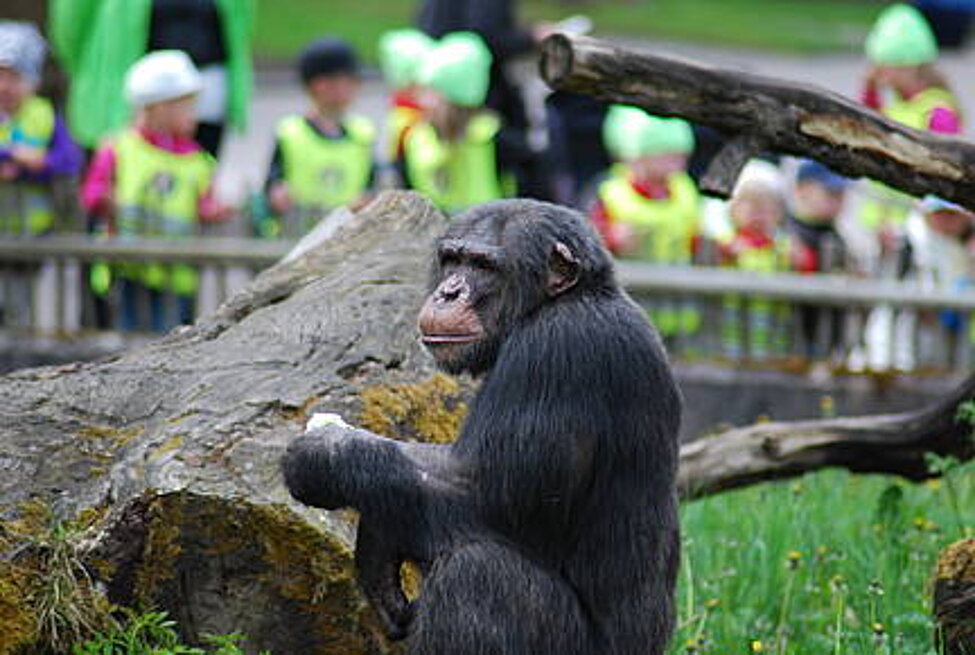Tomas Persson, Gabriela-Alina Sauciuc, and Elainie Alenkær Madsen published in
Primates.
Journal article:
Persson, T., Sauciuc, G-A., and Alenkær Madsen, E. (2017). Spontaneous cross-species imitation in interactions between chimpanzees and zoo visitors.
Primates, Open Access, First Online: 16 August 2017.
► Read article [URL/New Window]Imitation is a cornerstone of human development, serving both a cognitive function (e.g. in the acquisition and transmission of skills and knowledge) and asocial communicative function, whereby the imitation of familiar actions serves to maintain social interaction and promote pro-sociality. In nonhuman primates, this latter function is poorly understood, or even claimed to be absent. In this observational study, we documented interactions between chimpanzees and zoo visitors and found that the two species imitated each other at a similar rate, corresponding to almost 10% of all produced actions. Imitation appeared to accomplish a social-communicative function, as cross-species interactions that contained imitative actions lasted significantly longer than interactions without imitation. In both species, physical proximity promoted cross-species imitation. Overall, imitative precision was higher among visitors than among chimpanzees, but this difference vanished in proximity contexts, i.e. in the indoor environment. Four of five chimpanzees produced imitations; three of them exhibited comparable imitation rates, despite large individual differences in level of cross-species interactivity. We also found that chimpanzees evidenced imitation recognition, yet only when visitors imitated their actions (as opposed to postures). Imitation recognition was expressed by returned imitation in 36% of the cases, and all four imitating chimpanzees engaged in so-called imitative games. Previously regarded as unique to early human socialization, such games serve to maintain social engagement. The results presented here indicate that nonhuman apes exhibit spontaneous imitation that can accomplish a communicative function. The study raises a number of novel questions for imitation research and highlights the imitation of familiar behaviors as relevant – yet thus far understudied – research topic.

